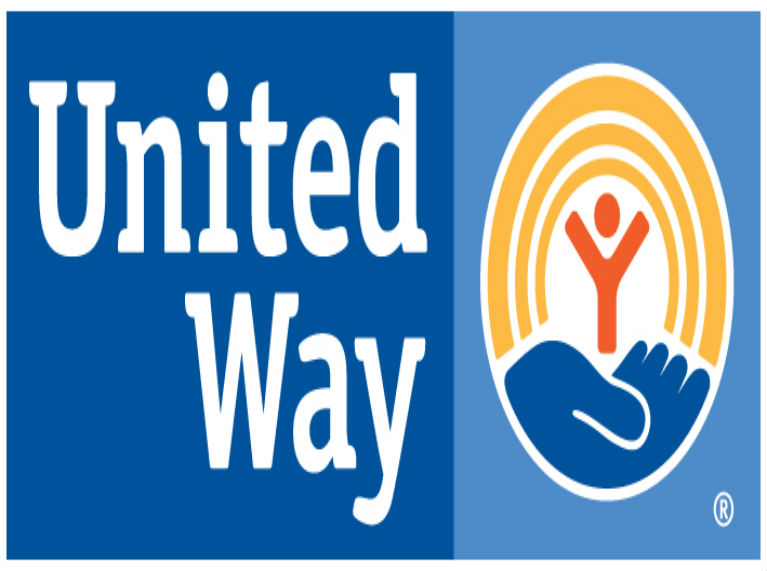In the late 1940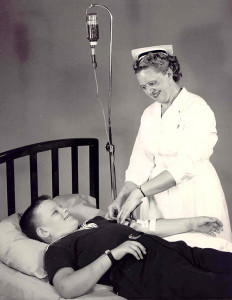 s Dorothy Watts White, RN worked as a pediatric nurse supervisor at Rochester General Hospital. She recognized that a number of children were being seen who needed help for problems related to bleeding. At the time, Mary Gooley worked for Dororthy White. They had been introduced by a prominent surgeon, Audlay Stewart, MD, who had performed surgery on Mary’s father. Prior to working at RGH, Mary worked for Dr. Stewart, assisting him in virtually every aspect of his practice, from organizing the office to visiting patient in their homes to draw blood samples. She was called to Rochester from college in Michigan to care for her ailing father. She studied Laboratory Science in Michigan for two years – the extent of her academic medical education. Working at RGH with Dorothy White was an exciting job for an energetic young professional.
s Dorothy Watts White, RN worked as a pediatric nurse supervisor at Rochester General Hospital. She recognized that a number of children were being seen who needed help for problems related to bleeding. At the time, Mary Gooley worked for Dororthy White. They had been introduced by a prominent surgeon, Audlay Stewart, MD, who had performed surgery on Mary’s father. Prior to working at RGH, Mary worked for Dr. Stewart, assisting him in virtually every aspect of his practice, from organizing the office to visiting patient in their homes to draw blood samples. She was called to Rochester from college in Michigan to care for her ailing father. She studied Laboratory Science in Michigan for two years – the extent of her academic medical education. Working at RGH with Dorothy White was an exciting job for an energetic young professional.
One winter evening in 1947, Dorthea Golemb came in to the hospital with her nine year old son, who had been stuck unsuccessfully many times by other medical providers in town attempting to get an IV started. Dorothy White started an IV for transfusion with just one stick. The two women bonded immediately. Young “Chip” Golemb was the first person with hemophilia that Mary Gooley ever met.
Witnessing the many unanswered needs of people with bleeding problems, Mary, Dorothy and Dorthea joined forces in an effort to improve support and medical care. They did this on their own “behind a curtain” as at that time Rochester General Hospital did not have a formal bleeding disorders program.
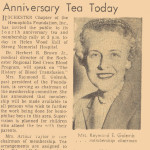
“The two Dorothys” as Mary recalls them “were a force to be reckoned with,” acting on behalf of underserved children with bleeding disorders. By the late 1940s, Dorothy and Dorthea organized 12 area families into a support group, which evolved into the Rochester Chapter of the National Hemophilia Foundation (now known as the National Bleeding Disorders Foundation). The group was officially chartered by NHF in 1953 – the fourth NHF Chapter in the United States – for the purpose of providing advocacy, support and assistance to people affected by hemophilia. In 1959, the members of the Chapter Board wisely asked Mary Gooley to establish a formal hemophilia treatment center to care for them and their children.
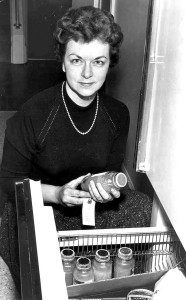
Determined and resourceful, Mary Gooley worked tirelessly for those she served. She kept plasma at the hospital and in her home freezer so she could treat people when they needed it, often bringing transfusions to their homes in the middle of the night and on weekends. She enlisted and trained high-school volunteers to collect blood donations and spin cryoprecipitate. She educated and organized strategic plans with doctors, administrators, insurance companies, employers, schools and families. Rochester’s Hemophilia Center became a specialty outpatient clinic that provided comprehensive care for the diagnosis and treatment of people with hemophilia and related bleeding disorders. At its founding, it was one of two such centers in the country and was the first to be organized as a free-standing clinic. Mary was a pioneer, leading the Center to provide services to families affected by hemophilia using a robust, team approach to address the needs of each patient as an individual.
The list of people who helped Mary is long indeed. Center staff and medical staff members touched the lives of countless families. Sally Day, RN, NP was the Center’s first nurse and the first hemophilia Nurse Practitioner in New York State. Agnes Merkel and Noreen Hickey were among the Center’s first employees, assisting Mary in all aspects of the growing operation. The list of compassionate, committed professionals involved in the Center through the years goes on and on.
The Center continued to grow and change with the times, often leading the way with the newest products and treatments for patients. There were medical and scientific advances throughout the 1960s and 1970s. Due to the relationship Mary established with Dave Stewart, then President of Blue Cross and Blue Shield of the Rochester Area, Rochester’s Blue Cross plan was the first health insurer in the United States to cover blood products used to treat people with hemophilia. The Center’s home infusion program began in 1971. Typically Mary would visit patients where they needed her: in their homes, at their place of work, even on vacation. Her touch was sensitive, her sense of caring was warm and true.
Throughout this time, Mary and Center staff helped to establish treatment centers in Buffalo, Syracuse, the Southern Tier, Albany and elsewhere in the country. In the 1970s, patients and staff helped with efforts to secure federal funding of comprehensive hemophilia care, which helped to spread the Treatment Center model across the country. Under the National Hemophilia Foundation’s umbrella, Mary traveled the country, assisting other communities seeking to establish what she created in Rochester.
The Center thrived alo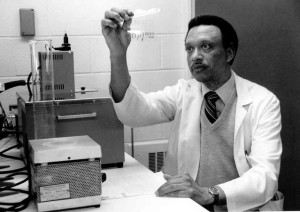 ng with other treatment centers across the country as medical advances enabled people with hemophilia to live longer, healthier and more productive lives. Then, in the early 1980s, tragedy struck: plasma-derived clotting factor products were found to be contaminated with HIV and Hepatitis, leading to terrible suffering and loss of life for many people who were infected by this medicine. Mary and the medical team at the Center lost many patients that they had known and treated for years – families were devastated. Those who survived were forced to cope with additional complex chronic illnesses beyond their hemophilia. Those were extraordinarily hard times for the Center and for the entire hemophilia community.
ng with other treatment centers across the country as medical advances enabled people with hemophilia to live longer, healthier and more productive lives. Then, in the early 1980s, tragedy struck: plasma-derived clotting factor products were found to be contaminated with HIV and Hepatitis, leading to terrible suffering and loss of life for many people who were infected by this medicine. Mary and the medical team at the Center lost many patients that they had known and treated for years – families were devastated. Those who survived were forced to cope with additional complex chronic illnesses beyond their hemophilia. Those were extraordinarily hard times for the Center and for the entire hemophilia community.
As the effects of this tragedy continued to play out on a human level, the Center faced organizational challenges: how would it care for patients facing such fierce health challenges and if many people were lost to these destructive conditions, how would it remain viable to care for people who survived?
With characteristic forethought and commitment, the Center’s team persevered through hardship. In keeping with Mary’s legacy, compassion and support rose to the forefront as patients, families and staff struggled with physical and emotional tolls. The comprehensive care team evolved, reflecting changing needs.
Mary Gooley served as the Center’s first President from 1959 through her retirement in 1986. The Center was renamed in her honor and she was designated a life-time member of the Center’s Board of Directors. Sadly, Mary peacefully passed away on December 30, 2019, although her compassion, vision and legacy will always live on at the Center.
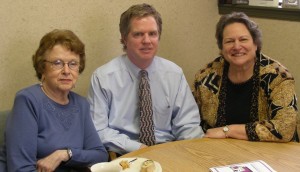
Mary’s successor, Joyce Strazzabosco, served 13 years, during the darkest time of the crisis. Joyce’s successor, Bob Fox, began his tenure in 2000 and served for 17 years. Bob was part of the teams that established ATHN (American Thrombosis & Hemostasis Network) and the Hemophilia Alliance, both critical organizations in the bleeding disorders community. The Center’s current President and CEO, Tom Wilmarth, started with the Center in 2010 as Vice President of Public Policy. Before starting with the Center, Tom was on the Board of Directors from 2007-2010.
Today, the Center provides education, treatment, research, advocacy and supportive programs to individuals and families affected by various inherited disorders, including disorders related to hemostasis (blood clotting), iron overload and a rare enzyme deficiency called Gaucher’s Disease. We strive to enhance our patients’ independence and well-being by teaching them and encouraging them to care for themselves and supporting them when they can’t or don’t. Today, many adults with hemophilia persevered through trying times and may live with multiple health complications. Adults with hemophilia today represent the first generation of people with hemophilia forced to cope with typical age-related health risks faced by the general population, including heart disease and cancer. Life expectancy in 1960 for a child born with severe hemophilia was just under 30 years. The Center continues to evolve to be able to provide 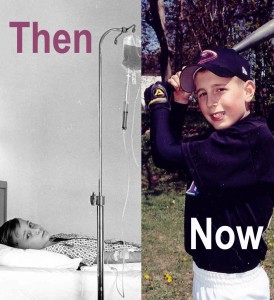 expert comprehensive care to these people as they age.
expert comprehensive care to these people as they age.
Children growing up today with hemophilia face a much brighter outlook than did their peers of decades ago, including life expectancy that virtually equals that of the general population. This generation also benefits from safer drug products that carry minimal risk of the infections that plagued previous generations and updated therapy regimens that negate crippling joint damage caused by repeated bleeding and make treatment much easier. However, these drugs are extraordinarily expensive and access to healthcare insurance is critical. The Center’s comprehensive care team and advocacy team all work together to ensure access to care.
Staffed by a select team of highly trained and personally-motivated professionals, we provide patients and their families with the knowledge, medical care and support needed to manage their conditions, enhance their independence and live their lives on their own terms. Every day we strive to live our motto that “Caring Is In Our Blood.”

